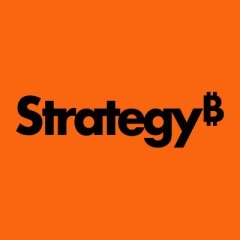What is our primary use case?
We are Reynolds American. We work in product supplies scenarios. In our environment, we work with any kind of volume data. We use MicroStrategy to deliver reporting to our trade reps who go into outlets, so account-level reporting. That's going to be more of our embedded reporting. That is an application that we created in Salesforce that links into MicroStrategy and links back and forth between the in-house application we've created.
But then, a large majority of our reporting is going to be that enterprise application where we have a fixed reporting environment on a monthly basis. We deliver reports to a large majority of our cooperate departments, anywhere from 300 to 1000 users.
We also have second, ad hoc environment, which is more of a weekly environment, where we typically do the same delivery of those static reports. But there is that component of the ad hoc where we facilitate the back-end development of all of the objects going through the STLC to Git, to production, so our business users can actually utilize what's available to them in the production environment. They can then take the next steps, pulling back those insights off of the data that we provide them.
How has it helped my organization?
I think one of the greatest things about MicroStrategy is their holistic approach to business intelligence. They don't put priority on one component of report development over document development, over administrative functionality, and security. I think they have a very holistic application.
They offer us a lot of out-of-the-box tools, which give us the ability to automate a lot of our administrative tasks. Some things become menial: user creation, restarting a server at 10 o'clock on a Friday - simple things that they really give you the tools to be able to do. That's one thing I really like about the MicroStrategy platform from an administrative perspective.
Regarding our users, the insights that they can gain, how quickly they can gather information, has been a huge benefit for us from MicroStrategy.
What is most valuable?
I think ease of use is definitely a benefit to our users, from an administrative perspective, as well as a business end-user perspective. I found that it's very easy to get users into the system, get them familiar.
The biggest part is the caveat of our data. We have more trouble getting people to learn our data than we do the structures, the navigation, manipulation, and all of these things that you do as a report developer and end-user. Most of them are familiar with Excel and it's just so similar that they can pick it up very intuitively. When you start talking about the really specialized data sets that we have, that's when it starts to become a little bit more hairy, so that's not really a MicroStrategy component.
In terms of self-service, we make use of Enterprise Manager. We've been trying to involve it a little bit more with some of our actual rep data, so we can start to look at that enterprise report utilization on a geographical scale, departmental scale. We've made a few enhancements to our Enterprise Manager system to allow that self-reporting to grow. We see that as a very useful system. It's been incredibly beneficial in diagnosing production performance issues, diagnosing what reports are running slowly, where the SQL could be optimized, opportunities or metrics where we see long-time running performance. Enterprise Manager has been absolutely vital in giving us some of the insights about our system.
We're starting to open it up to more and more people to give them the ability and start looking at these things themselves, but it's not the most intuitive system, Enterprise Manager that is, so it's tough. We're trying to bridge the gap between usability and who we let in the system, because you're not going to come in and just pick it up.
Personally, looking ahead at 2018, we're getting into the administrative side of our cloud implementations. We're really trying to move to the cloud in 2018, so I see myself getting more familiar with MicroStrategy on AWS Console. And even if we intend to go to the on-prem on AWS, I see us getting more familiar, and it's not necessarily a MicroStrategy component, but structuring the infrastructure of the server in such a way that we're cost-effective, we're maximizing our utilization when we can. I think that is going to be a large component for us in 2018, though it's not necessarily specifically MicroStrategy.
Then I think we have a huge enterprise-wide push to Visual Insight. Our environment has transformed over the last year. We were a strong "grid to PDF," "document to PDF," that's all we did. And then they came in with these Visual Insights and everyone was like, "Wow, that's kind of cool." We created a static reporting portal behind it and now, it's just taken our reports to another level. The level of insight that you get in a 30-second glimpse, it just revolutionized it for us. It gives the user a larger subset of the data so that they can actually maneuver around, rather than being specifically pointed at whatever your document is designed for.
So VI, Dossier.
If we can get on 10.9 this year, I would like to but we're not big on feature releases and we had difficulty with 10.9 on sandbox, so were hesitant right now.
Then our cloud implementation, coming in 2018, is going to be a big play on the 10.9, I think. There's no point in us upgrading and then going up the cloud two weeks later. It's a lot of stuff, but that's our focus.
What needs improvement?
The problem is the way that their metrics are designed. It can be difficult to understand what you're actually looking at. Then when you're comparing a document against the VI, you can't actually do that properly. So there are components, and there is a huge learning curve in the Enterprise Manager space. I think it would benefit them greatly if they were to exercise a significant amount of research and development in that space.
They need to supply the support system that's just not there right now. They don't have Enterprise Manager classes. You need in-depth classes to understand what those metrics are doing, to understand the table associations from one to the other. You can't just go and pick it up and understand that DT_DAY connects to all of these tables, without going into Architect, looking at the source tables. I, as a analyst, a slightly technical user, I don't have the expertise to do that. Business users definitely don't have the expertise to do that.
What can they do embolden that system, to make it more intuitive? But also, to supply that support system so that they can get a higher level of reporting.
I know they're working on the telemetry initiative right now, and they have given us some reports in that system, the Enterprise Manager space, that really do help us look at those insights. But the biggest piece is that we can't get to them by ourselves, that's the problem. We don't see it by ourselves. We can't get to them by ourselves because there are association-joins and things that we don't understand, that are causing either cross-joins or any other crazy thing that you could think of.
It's kind of like a trial and error deal, to see what's coming back. You look at the SQL, make sure it's a synched. It can be a little difficult to get in there and really figure things out.
In terms of features for a future release, I have a whole list somewhere. Row-level security, column-level security, on attributes. I want to be able to handle full-scale security model from the semantic layer, flat out.
I want to be able to have one report that's delivered to 30 different people and all 30 different people see something different. Now, you can do that today with metrics. You cannot do that with attributes. There's a component of that which, if an attribute is on granularity-one and another is on granularity-two, and you remove granularity-one, you're now going to be summing to a level that you did not expect before.
They have a long road ahead of them to be able to accomplish it. But, being that we're in a very regulated industry, it is incredibly useful for manufacturing, for research and development, for those in Earth sciences, environmental sciences, those folks who have a lot of SPI, a lot of that data that they want to restrict users having access to, I think that's a selling point that they don't have right now. I think is going to take them out of the Earth sciences space as a true competitor. There are so many out there, and it's a space that they have an opportunity in, and that row-level of security was a big component of what we would do.
Then there's significant digits, which my client team will probably laugh about if I told you that, which gave us a lot of difficulty trying to get to a scientific way to look at decimals, but it's not straightforward and it's a pain.
Then a few of those consolidations that I mentioned.
Then, if they could beef up Enterprise Manager - if I could go to my client team and tell them this report has been run three times in the last three months by these three people and they say, "Well, those three people, what are they doing? Why are they running it? Get it out of our system. That's a waste of our time. It's a waste of our resources. It's taking up space." So if we can get to that next level in Enterprise Manager, I think that would be huge for us as well.
What do I think about the stability of the solution?
We are running into performance issues on the database side right now. We have MicroStrategy issues. We upped to the named user licenses, no issues. Then we introduced some new things to the environment, which is causing, again, database issues.
From a stability standpoint, from MicroStrategy, I would say it's fairly consistent. I would give it a "B" because there are times where we have issues that are just inexplicable. They go away and then we have no resolution. To me, that's not acceptable. There are just times where our users can't access things and we're not sure why, and that's a problem to me.
We had some failures on data load, whether this is a component of MicroStrategy or how our service is configured, I'm not sure. We just had some issues keeping our data loads running from an Enterprise Manager perspective, but from the production Intelligent Server, stability is fantastic. We've really not had many issues.
What do I think about the scalability of the solution?
Scalability seems great. It wasn't great when we were on the core licensing, to be completely honest, because we were restricted to a single core across 2,500 users, so we moved to named user licensing, giving us eight cores - no problems, whatsoever. You start to think about how you move to the cloud, those eight cores become 16, then become 64 very quickly - not an issue. Scalability on that end, of the Intelligent Server, I think that's huge. We need to figure out the database component of that, but I don't think what you're asking about.
How is customer service and technical support?
We have 24/7 technical support. They're incredible. We have the extended support plan, so we have actually an account rep assigned to us. If you go for the extended support plan, it's unbelievable. You email him and you've got someone talking to you within an hour; they're working to solve your problem. They'll go through iterations. Sometimes, they'll be taking shots in the dark, but it's IT, it happens; shut it off, turn it back on, things like, you've got to do the basics first. But they have some incredible resources on their team.
The majority of people that I talk to, that I get onboard with, absolutely understand our business model, how we incorporate MicroStrategy into it. But it's the occasional person who you get and you say, "Hey, I already did this troubleshooting stuff, etc." and they say, "Well, why don't you try this?" and you tell them, "Well, if you read my paragraph, I've done that three times." It's just like one in 10 that you get someone like that, but I think you're going to have that everywhere. Then you've got some people who know us by name, they know who we are. When we request support, they are the people who come to us. Creating that relationship with the support team has been absolutely incredible for us.
We have had production problems, Enterprise Manager problems, and they're right there every step of the way, going through our installations, making sure things are coming through properly. In the event that we do have problems, they are always there to support. I think that's been huge for us.
How was the initial setup?
I wasn't involved in the initial setup, but I have been involved in upgrades. The upgrade from 10.4 to 10.8, simple click of the button, but it just didn't go through as we had anticipated. There's really no explanation as to why. We ran it again and it went through without a hit. Again, that was one of those problems where we don't really know what caused it, we don't know why our installation wasn't working very well.
Then when we attempted to upgrade from 10.8 to 10.9 on our sandbox server, we spent roughly a month and a half trying to do that, completely and totally unsuccessfully. I don't know why. Again, I think that might be a component of how our servers are structured, the way our registries are structured, the way our security interacts with MicroStrategy, but it's a problem. We're working on that.
What other advice do I have?
Being in the position that I'm in, I see the benefit of having the disparate locations. I love web. Web is great for the business user. I love Developer. Developer is great for me. I do not want my business users touching Developer. I don't even want them to know it exists.
Honestly, MicroStrategy came and did a demo for our clients, and part of the reason they didn't get the contract is because they showed Developer. The business users got so confused that it just was not good. But for someone like me, highly technical, there's just so much more functionality. I like that they're trying to incorporate Developer into Workstation and Desktop into Workstation, so you get the all-in-one encompassing, highly technical Developer Workstation where you can do the VI, you can do the Dossier. But then you have your business users' side.
Then I think there's another component: You've got all of your administrative apps in the back-end like Enterprise Manager, System Manager, Command Manager, Object Manager, and they're disparate.
I was talking to them a little bit yesterday about trying to bring all of this together under one platform. They've done a touch of that with System Manager, but not to the point that it's easily replicable to just run Command Manager out of System Manager. The only reason to use System Manager is if you have a large workflow. Otherwise, it will be quicker to go to Command Manager. Now, if they could kind of bundle that all under one umbrella, I think it would be possible. I think it would be huge from an administrative standpoint, giving your developers, giving the DBAs that level of access in one location that would really bring it to the next level.
Then if you want to take it even a step further, you can start to think of incorporating Workstation, but that might be a little bit too much in one application, so we'll let them bite off what they can chew for now.
In terms of mobile, I plan on pitching and pushing mobile pretty hard. We have an initiative coming in 2018. We're going to replace all of our trade laptops. We don't use mobile devices today, but we will then replace those laptops in two years. That means that we need to get into the mobile space within a year, we need to validate that everything works, and then, quite frankly, we're probably going to have to redesign many of the applications that we have around that mobile platform. We use Salesforce for some of our trade applications which then import to MicroStrategy to pull in some information. With the new Transaction Services, where documents are now, and where VIs and Dossiers are heading, we could get to a point where we're no longer using that Salesforce application, and we're running a full-fledged customized application out of MicroStrategy. So, I would like to get to that.
That will be a large-scale push on my company, but the mobile platform: absolutely. I will be pushing very hard for that.
One of the beautiful things about getting into the cloud space is, it's already there. It's just a matter of us getting it tested, messing around with it, getting the credentials squared away. We've been through conversations of how to get security for people who don't have Active Directory on an iOS device. That's where we are in our talks right now, but mobile is definitely a big, big thing in our sights.
What I appreciate in a vendor is integrity. It's a fault and it's a benefit. Our team at MicroStrategy is honest. When they can't do something, they will very easily, flat out, come out and say, "I don't think I can do that. I will put this amount of effort into trying to figure out how we could do it. I'll put out a tech note, see what kind of pickup I get back." That's one of the incredible things, because you're not having someone who's saying, "Well, I can do this. I can do that. I can do this," and then you're thinking, "Well, he said he could do it," so now I could do it. Let me go out and spend X amount of hours to go and do something where he's going to pull in a third-party, spend $60,000, and complete something.
I think that it has been great for us to be able to level-set our expectations as to what we can and cannot accomplish, what's realistic, what is pushing us to the next level. When they spot something, they'll say, "That's wrong." They'll laugh at us and literally say, "What are you doing?" and I love that. I think our client team is fantastic. They're unbelievably knowledgeable. Integrity, intelligence, and honestly. Those are my criteria right there.
Overall I rate MicroStrategy a nine out of 10 because of a lot those things I mentioned before. We have issues where we don't really know what's going on. I think it goes back to that "B" rating I gave earlier. There are a few pieces that we're trying to get a handle on that we just can't. I think there are a few enhancements that they could do to make their system better. A "B" rating - I am very judgmental, I do not take things lightly.
Then also, they need to work on their license structure. They are not competitive against somebody like SAP BusinessObjects.
We had a quote that was almost a third the price, coming from SAP BusinessObjects, and it's not a better platform. It's not cheaper. They do concurrent user licensing, while MicroStrategy does named user licensing, and that was literally the only difference. But it made a $500,000 difference. They've got to do something to make themselves more competitive. Maybe it's assessing your business users and what you really expect them to use, and maybe giving a reduced price on that. But they are already giving us a 60% discount and they were still a million or so above, over a three-year time period. That doesn't account for synergies as we get from on-site resources that are already available, and things of that nature, but I thought that that was a big, big deficit for them.
Regarding advice to a colleague who is looking to implement this type of solution, first, if you can get support online or at least aware that you're doing an installation so that they can be ready for some questions, that is absolutely huge. I know most people only get support for "nine to five," but that, for us, has been absolutely vital.
Also, planning and testing. It's really all you can do. It's just a typical installation. I don't think there's anything out of the ordinary. There are no caveats about MicroStrategy that are different than anybody else. It's relatively straightforward. You've installed a disk before. You plug it in, you pick what you want out of the drop-down box and then you go, boom. But then, when you start to get to the security setup and things like that, you need to be thorough. You need to plan properly, and you think of your use case down to the end user.
I think that one of the most important things that we may have overlooked is getting to: What are you going to do in your two, what are you going to do in your three, where are we going with this? Not, "What do we have now." You've really got to think about, are we structuring this in such a way that in two years, we're going to be so disoriented that we don't know where anything is in the system. I think that ensuring that you have a vision for what your three-year or five-year plan is, I think that's huge.
Again, coming from a project management background I would say plan, plan, plan, plan, and then plan again. That's the best thing that you can do, because implementation is not that long. It's not that hard. As long as you've gone through the settings, you know what you want, it's not going to be a 20 or 30-hour process where you're setting up. You'll install, it'll take 15 minutes, you come in, you set your settings, 30 minutes, and then, boom, you restart the server and you're done. It's just planning. Making sure you know exactly what you're going to do when you do it.
Disclosure: My company does not have a business relationship with this vendor other than being a customer.














